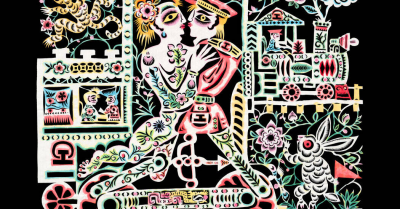纽约时报中文网 - 英文原版-英A Queer Chinese Artist Finds Liberation Through Folk Art
March 22, 2024 2 min 303 words
这篇报道以一位中国酷儿艺术家为主角,展现了艺术如何成为他们自我表达和解放的工具。这个话题引起了我的注意,因为它挑战了我们对性别、性取向和艺术的传统看法。文章以细腻的笔触描绘了艺术家如何通过民间艺术找到自我,既突显了中国丰富的民间艺术文化,又提醒我们,艺术是一种无国界、无性别的通用语言,能够连接不同的人,让他们有机会理解和接受彼此的不同。这是一篇以艺术为桥梁,促进文化交流和人文理解的深度报道,值得我们深思。
In the years he hid his sexuality from his children and village neighbors, Xiyadie would take short-bladed scissors to rice paper and give shape to unfulfilled dreams.
At first glance, his creations conform to traditional cutout designs of animals and auspicious symbols adorning doorways and windows in China. But a closer look at the shapes — birds, butterflies and blossoms perched on twisty vines — reveals bodies conjoined in the throes of intimacy or separated by brick walls.
The artist, 60, who goes by the pseudonym Xiyadie, was born in a farming village in northern China, and he creates queer paper cuts. Paper cutting is a folk tradition dating from the Eastern Han dynasty (25-220 C.E.) that involves cutting crisp lines and shapes into folded layers of rice paper. It’s about excising the negative space to reveal the picture inside.
Xiyadie’s home province of Shaanxi was a hub for folk art; in his hometown, paper cuts marked births, weddings and Lunar New Year celebrations. The women in the village passed on the craft to their daughters and daughters-in-law. Xiyadie said he learned it by observing his mother and village matriarchs.
He mostly cut freehand, sometimes using indentations he made with his fingernails as outlines, then dyed his creations with green, pink, red and yellow pigments. He began making homoerotic paper cuts in the 1980s as he struggled with his closeted sexuality, but for many years he kept these works to himself.
Until 1997, gay people in China risked being persecuted; homosexuality was not removed from the official list of mental disorders, maintained by the Chinese Society of Psychiatry, until 2001.

